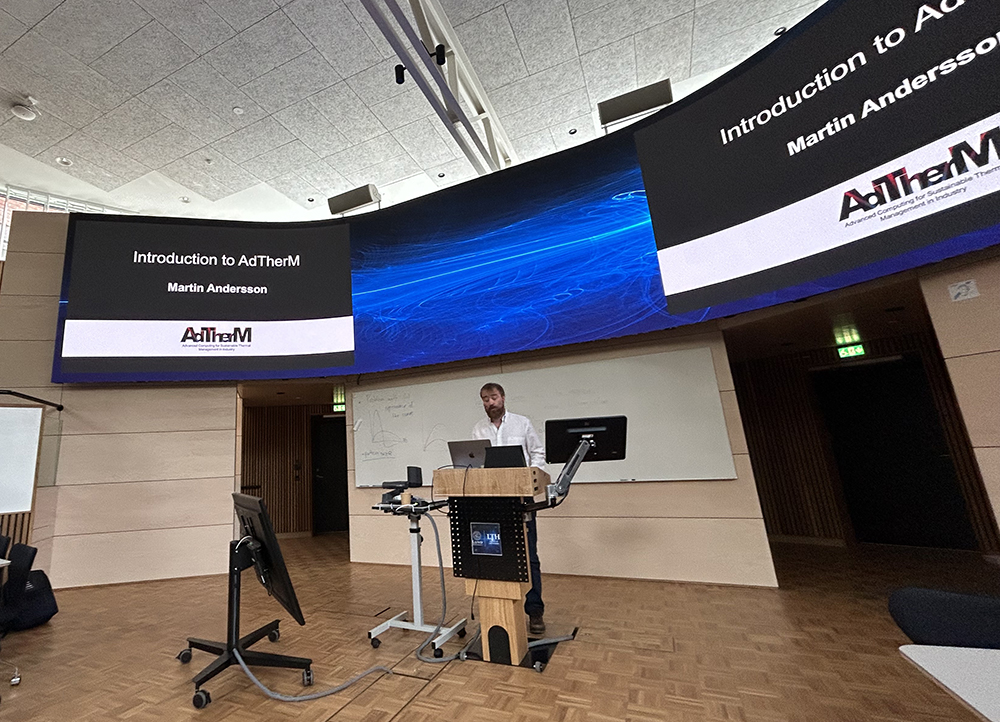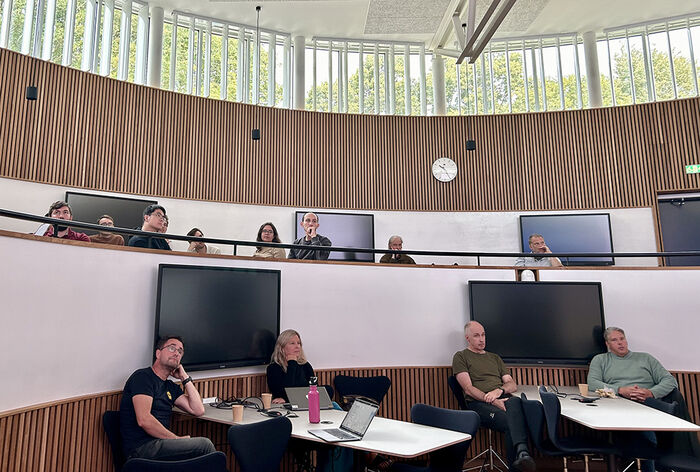Hello, Martin Andersson – tell us about your journey towards a competence centre
In mid-September, Professor Martin Andersson held a lunch seminar presenting the Competence centre AdTherM, of which he is also Deputy Director. The seminar attracted 25 participants from the Energy Transition profile area and focused on how the competence centre was created and how it is organised.
– Published 4 October 2024

In this follow-up interview, Martin Andersson tells us more about the process behind AdTherM and how the partners involved organised themselves to become one of the competence centres that received support and funding from Vinnova in the latest call. He shares their journey to secure funding and offers valuable tips to others who are in the process of applying for similar support.
AdTherM, Advanced Computing for Sustainable Thermal Management in Industry, is an initiative funded by Vinnova and is a collaboration between Lund University, the Royal Institute of Technology (KTH) and Luleå University of Technology (LTU). The centre focuses on developing advanced computational models to optimise heat transfer in industry. With the support of eight large industrial partners and four medium to small sized companies, AdTherM will contribute solutions to common heat transfer challenges shared across different industries.

How did you three partner universities come together to apply for AdTherM funding?
It all started with representatives from Lund and KTH meeting at a conference, and from there we made a strategic decision to include more universities (i.e. LTU) in the application to increase the chances of getting funding. We also saw a value in gathering the broad expertise available at our universities and working together. The feasibility study included eight large companies that were also involved from the beginning, and despite an initial no, we chose to continue to push the project forward, and expanded the project team with four slightly smaller companies.
You initially received a ‘no’ – what was it that drove you to continue the work?
The companies involved in the feasibility study pushed us to try again, and although we knew the competition was high, we really believed in the idea and thought we had something unique. Unique in that we were connecting different industries but all sharing the same challenges with heat transfer. This gave us the motivation to improve the application and resubmit it.
What do you think made your application successful in the end?
A key factor was our strong network and the fact that we managed to involve all industrial partners in the process early on. We actually sat down physically in Stockholm and invited all the partners - and miraculously they were all able to attend to discuss the application and the design of the competence centre. We also made sure to create a good balance between the companies, with everyone having an equivalent weight in the centre. This resulted in a well-balanced project, which I think was crucial for us to get it approved. Another strength was that we clearly included training through thesis work. Master's theses, compared to PhD projects, provide faster results and a faster employability for companies.
Energy Transition's Lunch Seminar
The lunch seminar was organized as part of the Energy Transition lunch seminar series.
